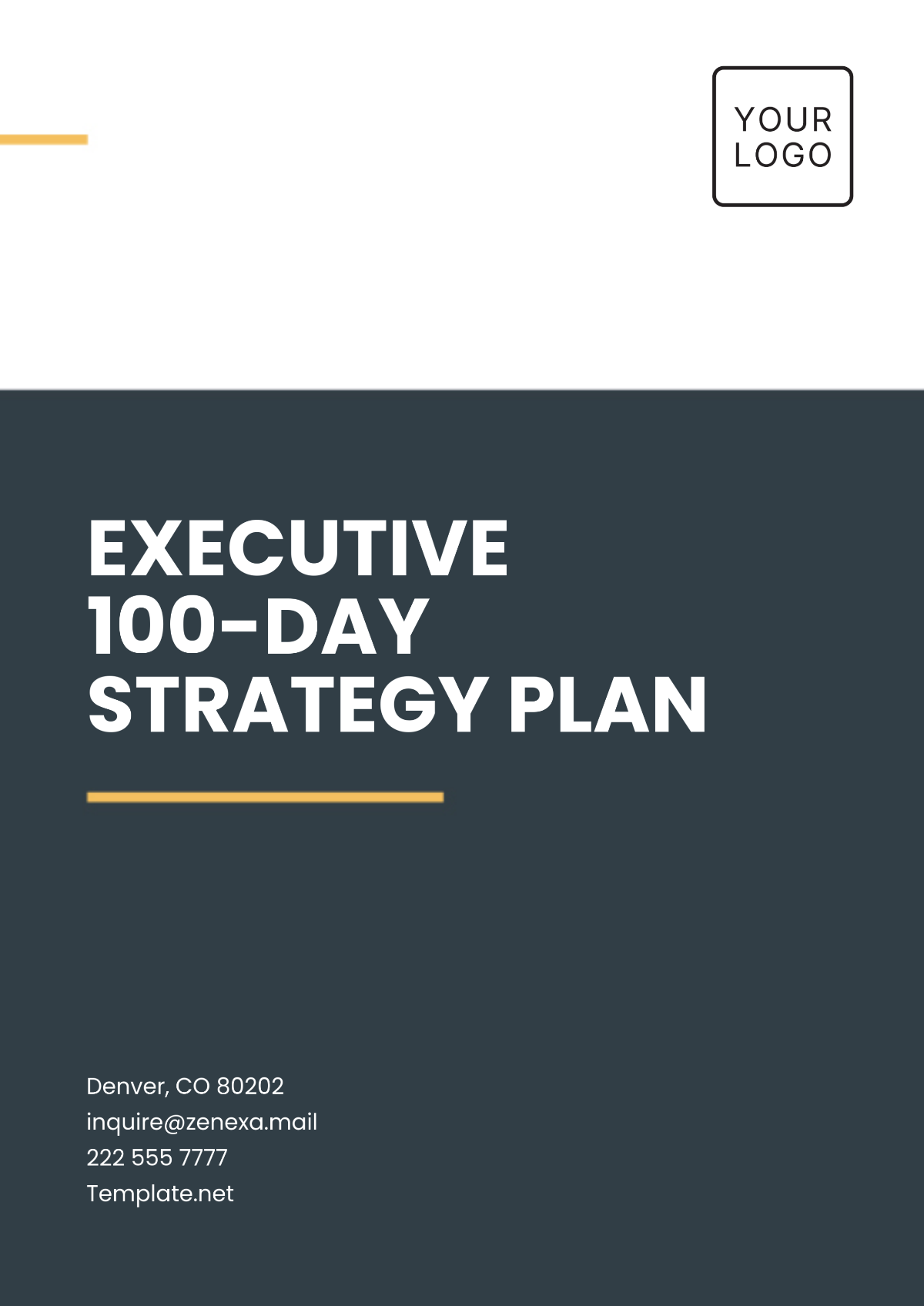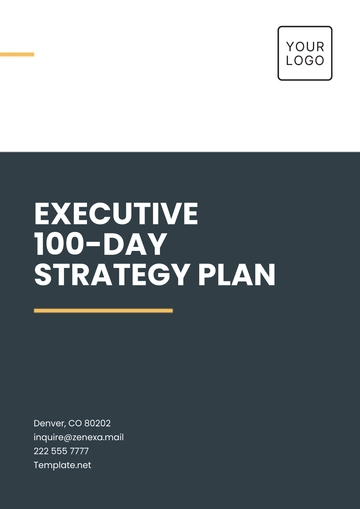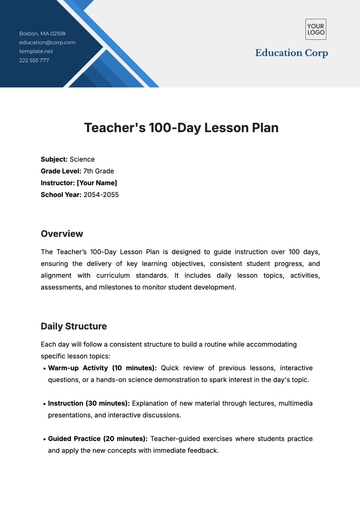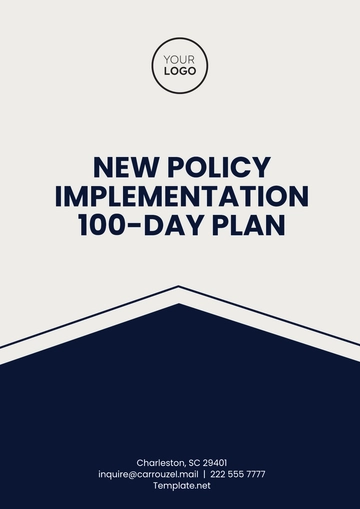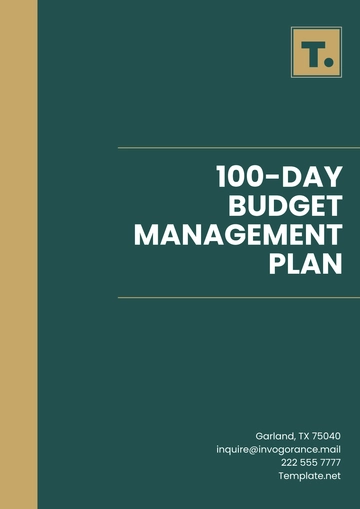Executive 100-Day Strategy Plan
Prepared by:
[Your Name]
[Your Company Name]
Introduction
The Executive 100-Day Strategy Plan is a comprehensive framework designed to guide a newly appointed executive at [Your Company Name] in their first 100 days in the role. The plan provides a structured approach to assessing the organization, aligning with key stakeholders, and setting priorities for long-term success. It helps ensure a smooth transition and establishes a strong foundation for future leadership at [Your Company Name].
Phase 1: Days 1–30: Assessment and Integration
Objectives
Understand the organization’s culture, structure, and operations.
Establish relationships with key stakeholders.
Conduct a SWOT (Strengths, Weaknesses, Opportunities, Threats) analysis.
Assess the immediate needs of the team and the organization.
Key Actions
Meet with Internal Stakeholders:
Schedule one-on-one meetings with direct reports, senior leaders, and other key personnel.
Learn about their roles, challenges, and expectations.
Build rapport and trust.
Review Company Documents:
Study organizational charts, financial statements, strategic plans, and performance reports.
Familiarize yourself with current projects, key metrics, and performance data.
Conduct Organizational Assessments:
Conduct informal surveys or focus groups to assess the employee experience and organizational health.
Analyze strengths and weaknesses within the company's processes, culture, and leadership.
Identify Quick Wins:
Look for low-hanging fruit that can demonstrate immediate impact, such as addressing small issues or inefficiencies that can yield quick improvements.
Milestones
Completion of stakeholder meetings and SWOT analysis.
Initial assessment report.
Identification of short-term priorities and actions.
Phase 2: Days 31–60: Strategy Development and Alignment
Objectives
Begin developing long-term strategic goals and objectives.
Align team and organizational goals with leadership vision.
Formulate key initiatives for organizational improvement.
Key Actions
Set Strategic Priorities:
Develop clear goals that align with the organization's overall vision and mission.
Prioritize short-term and long-term initiatives.
Define key performance indicators (KPIs) for success.
Engage with External Stakeholders:
Meet with key external partners, clients, and suppliers to build relationships and gain a deeper understanding of their perspectives on the company.
Assess opportunities for collaboration or improvement in external engagements.
Communicate Your Vision:
Communicate your vision, leadership style, and priorities to the organization.
Ensure alignment and buy-in from all levels of the company.
Develop a Change Management Plan:
If applicable, create a plan for managing any organizational changes, including restructuring or process improvement initiatives.
Milestones
Finalization of strategic goals and priorities.
Communication of the executive vision to internal and external stakeholders.
Development of a high-level change management or improvement plan.
Phase 3: Days 61–100: Execution and Leadership Optimization
Objectives
Begin executing on identified strategic initiatives.
Foster a culture of accountability and performance.
Evaluate early progress and refine strategies as needed.
Key Actions
Implement Key Initiatives:
Establish Accountability Structures:
Foster Team Development:
Evaluate Early Results:
Milestones
Launch of major strategic initiatives.
Established systems for tracking and measuring performance.
Team feedback and evaluations.
Key Success Factors
To ensure the success of the 100-Day Strategy Plan, the following factors are critical:
Clear Communication: Maintain open and transparent communication with both internal and external stakeholders.
Agility: Be prepared to adjust strategies as new information or challenges arise.
Engagement: Continuously engage with employees at all levels to foster a culture of collaboration and trust.
Data-Driven Decision Making: Rely on data to guide decisions and monitor progress toward objectives.
Conclusion
The first 100 days in a leadership role at [Your Company Name] are critical for laying the groundwork for success. By following this structured plan, the new executive can effectively assess the organization, align goals, and begin implementing strategies that will have a lasting impact. The goal is to build trust, communicate clearly, and establish a foundation for achieving long-term organizational objectives at [Your Company Name].
Plan Templates @ Template.net
